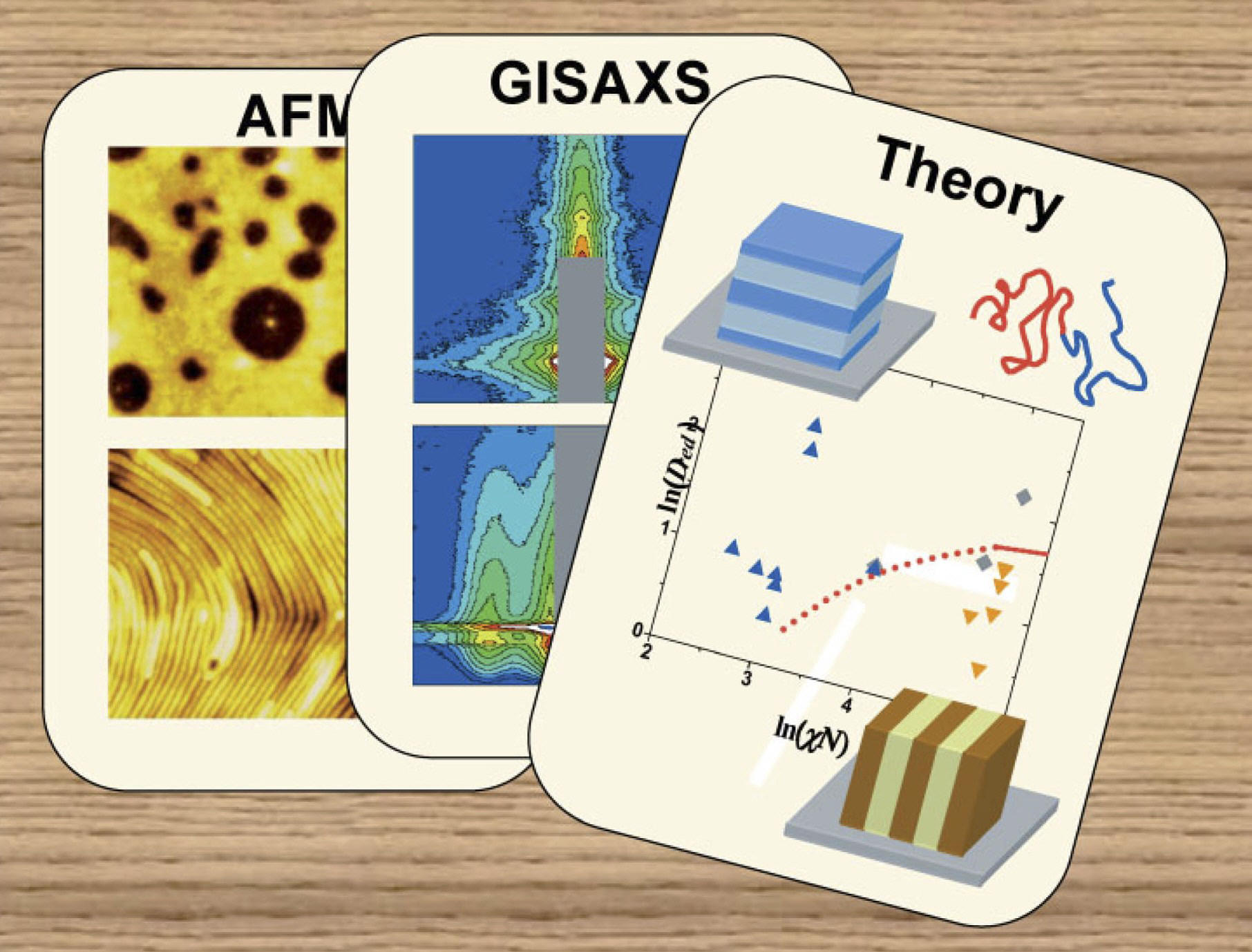X-RAY RUNS: Apply for Beamtime
2017 Nov 1 - Dec 21
2018 Feb 7 - Apr 3
2018 Proposal/BTR deadline: 12/1/17
2018 Apr 11 - Jun 4
2018 Proposal/BTR deadline: 2/1/18

Contact: E. Fontes (ef11@cornell.edu)
For the May 2007 cover of journal Macromolecular Rapid Communication, CHESS staff scientist Detlef Smilgies designed artwork reflecting how two experimental techniques and one theoretical assault came together to unravel the ordering behavior seen in thin films composed of large molecular weight diblock copolymers.
Their paper, “Effect of the Molecular Weight of AB Diblock Copolymers on the Lamellar Orientation in Thin Films: Theory and Experiment,” highlighted the work of an international research team with members from Russia, Germany, Denmark, and the US. Authors included I. I. Potemkin (Moscow State University), P. Busch (JCNS-FRMII, Technische Universität München, Germany), D.-M. Smilgies (Cornell High Energy Synchrotron Source, CHESS), D. Posselt (IMFUFA, Roskilde University, Denmark), and C. M. Papadakis (Technische Universität München, Germany).
Diblock copolymer systems are quite famous for exhibiting a wide array of complex, geometrically interesting two- and three-dimensional structures. Diblock copolymers molecules, like polystyrene-block-polybutadiene (PS-b-PB), are formed by combining at least two long-chain polymeric molecules, usually joined end-to-end, chosen so the two subunits are chemically or sterically immiscible. Microphase separation of the two polymer subunits leads to stable well-defined morphologies, such as lamellae, cylinders, and spheres, all of which have been found in the bulk as well as in thin films.

Schematic of a lamellar
phase of diblock copolymer with layer orientation
parallel (left) to surface versus perpendicular
(right) to surface.
Lamellar phases of PS-b-PB deposited onto clean silicon substrates (covered by a native oxide layer) show stable phases with lamellae planes either oriented parallel to or perpendicular to film boundaries. The goal of this team’s work was to understand what role the molar mass of the polymeric subunits plays in determining either parallel or vertical alignment. Essential to the success of collaboration was being able to perform a variety of systematic measurements on thin films, including GISAXS data taken at CHESS D-line station, overseen by Smilgies, and AFM data obtained at the University of Leipzig in Germany by the research group of Christine Papadakis. The experimental data were explained theoretically by Igor Potemkin. The team came together with support from a NATO Collaborative Linkage Grant awarded to Papadakis and Potemkin in 2002.
Experimentally, Atomic Force Microscopy (AFM) and grazing-incidence small-angle x-ray scattering (GISAXS) were both used to record the lamellar orientation as a function of the molar mass of the copolymers as well as film thickness. Potemkin and coworkers use free-energy considerations to explain the molar mass dependent morphology seen in the experiments. Two approaches were developed. The first applies corrections to the strong segregation theory; which posits that mixing two polymers is so unfavorable in energy terms that only phases with full segregation will be stable. Their second analysis considers an intermediate regime where full segregation is not needed. In both case they proceed to show that the perpendicular orientation of the lamellae formed by molecules of high molecular weight is stabilized by A–B interfacial interactions. They are weaker in the case of the perpendicular orientation of the lamellae, whereas the surface tension coefficient of the A–B interface decreases with the increase of the molecular weight.

Cover art from
the May 2007 issue of "Macromolecular Rapid Communication"
displaying the combination of AFM images (left), GISAXS
x-ray images (center) and theoretical predictions
(right) all coming together to explain the complicated
multiple phase diagrams.
In the end, theory agrees with experiment that, depending on the molecular weight of the compositionally symmetric PS-b-PB diblock copolymers, both the parallel and the perpendicular orientation of the thin film lamellae can be stable. The basic ingredients to the free energy for the films are interface enthalpy versus interface entropy. By increasing the chain length (with increasing molecular weight), the entropic contribution becomes larger which yields the standing lamellae at high molar mass. They conclude that the transition from parallel to perpendicular orientation with increasing molecular weight is driven by A–B interfacial interactions which are weaker for longer molecules in the perpendicular orientation of the lamellae.
